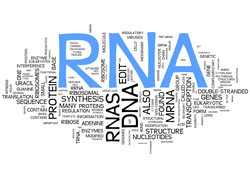Significance of the non-coding RNA family
The main thrust of genomic research is towards proteomics but there are thousands of genes controlling cell processes uninvolved in protein production. Moreover, the significance of gene sequence, crucial to function, is largely unknown. Another barrier is that gene finders only pick up large highly expressed sequences that are conserved throughout evolution. Most genome elements encode intermediary RNA such as transfer and ribosomal, but there is a vast array of other RNA molecules that play an important role in cell function. Consequently, the 'Noncoding RNA comparative searching system' (NARCISUS) project aimed to detect and classify these non-coding RNAs (ncRNAs). One type of ncRNA that has particular significance in the cell is small nucleolar (sno) RNA, type H/ACA. snoRNA are involved with initial stages of translation and contain a specific pocket or internal loop to guide the molecule to the correct RNA target. This snoRNA variety makes specific chemical changes and modifies a uridine molecule. NARCISUS collated information on relevant RNA molecules in specially designed databases. Three main databases were set up: human snoRNAs, ribosomal RNA (rRNA) pseudouridylation sites and human introns (gene parts that are intermediate to mature RNA production). Data sets were compared with key databases using newly designed algorithms, specifically selected software as well as other techniques (topology analysis and the pseudo-energy test). This made it possible to conduct successful cross searches resulting in 8 350 human intron sequences. Out of 10 000 snoRNA candidates, the researchers identified 8 new sequences. Interestingly, all but one are located next to the telomeres and centromeres, regions of considerable significance in development and ageing. For future research, 210 pseudouridylation sites have been verified but there remain around 20 snoRNAs as yet unidentified. NARCISUS may have uncovered an alternative, so far unknown mechanism in cell function. Numerous human diseases are connected to ncRNAs and NARCISUS results may lead to new therapies for halting viral growth, delivering drugs or treating cancer. The emerging field of RNA nanotechnology is making it possible to design nanoparticles from RNA for targeted drug delivery or access to site of interest.







